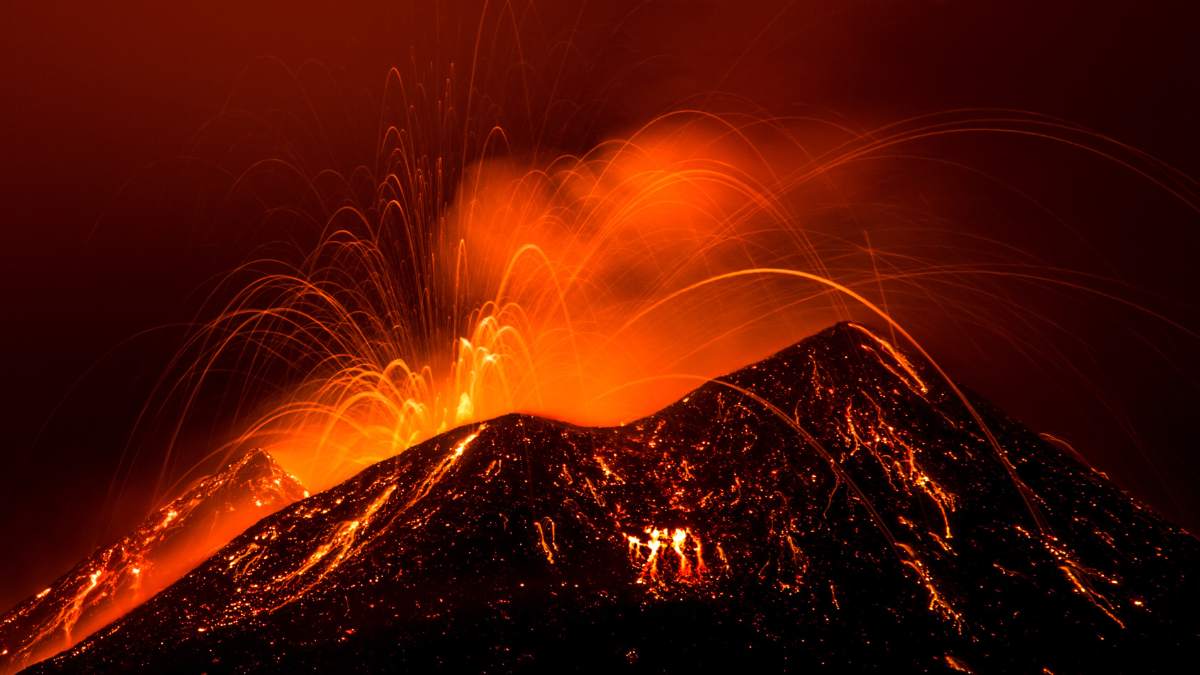Mount Etna, found on the eastern coast of Sicily, Italy, is Europe's tallest and busiest volcano. It stands impressively over 3,300 meters high, truly towering over the area. This powerful natural landmark is super important, not just for how the Earth works, but also because it is deeply connected to local history and culture.
Mount Etna is famous for erupting often, which it has done hundreds of times over many years. These eruptions have greatly affected everything from the local farms, thanks to the incredibly rich soil the volcano creates, to the special way buildings are designed in the towns on its sides.
Tourists and guides run for their lives when Mount Etna suddenly erupts pic.twitter.com/HKhTiUCuUe
— Nature is Amazing ☘️ (@AMAZlNGNATURE) June 3, 2025
Check Out: What is Polyworking? The Multi-Job Trend Reshaping the U.S
Mount Etna Significance
The communities living near Etna have learned to adapt to its unpredictable rhythms, skillfully navigating both the dangers it poses and the abundant blessings it provides. In 2013, the United Nations Educational, Scientific and Cultural Organization (UNESCO) recognized Mount Etna's global importance by declaring it a World Heritage Site.
This award shows that Mount Etna is very special for its unique Earth features and how much it has influenced the culture and history around the Mediterranean Sea. Even though Etna is powerful and sometimes violent, it is still a super important part of the land and the lives of the people who live on its slopes.
Latest Eruption
On June 2, 2025, Mount Etna put on another amazing display of nature's raw power. The eruption kicked off around noon when a piece of the volcano's southeast crater broke apart. This set off a loud boom and shot ash, smoke, and fiery lava way up into the sky.
When the ground started shaking, tourists in the area panicked and ran. A red alert was put out for planes because of the thick ash cloud, but the nearby Catania Airport kept running, though it was watched very closely. Luckily, the lava mostly stayed inside the volcano's natural walls and did not flow into the towns nearby.
A Long, Fiery History

Mount Etna has a very long history of eruptions, with its activity going back to ancient times. According to legend, the monstrous Typhon was trapped under it, causing its fiery outbursts. Over many hundreds of years, Mount Etna has erupted countless times. These powerful eruptions have had a huge impact, changing everything from how local people farm to how their buildings are designed. The towns built right on the volcano's slopes have learned to live with its natural rhythms, understanding both the dangers it presents and the many blessings it brings through its rich, fertile soil. They have truly adapted their lives to coexist with this active giant.
Geology and Structure
Etna is a stratovolcano, which means it is constructed of layers of hardened lava, ash, and rocks. This stratovolcano is located on the boundary where the African tectonic plate is slowly subducting under the Eurasian plate, this is a geological hotspot. It has many openings and cracks, which means eruptions can be hard to predict, and each one can be different.
Life and Culture Around Etna
Mount Etna is a powerful volcano; despite this, its soil is super rich and great for growing things. Because of this, you will find lots of vineyards, fruit farms, and other farms doing really well in their lower parts.
Today, Mount Etna is one of the most popular places for tourists in Sicily. Visitors can hike its paths, ride cable cars, and even go on guided trips that take them right up close to the steaming craters. Sometimes, eruptions might stop people from going everywhere, but Etna still attracts adventurers, scientists, and nature lovers from all over.
Comments
All Comments (0)
Join the conversation